Automatic fire extinguishing installation (AUPT)
There is no need to tell anyone how dangerous any fire is, and how difficult it is to fight a fire that can, in a matter of hours, destroy the results of many years of work by human hands, along with the person himself. However, this was the case before. However, time passes, and science develops along with it. Today people have learned to fight fire and learn about the threat of a fire at the moment when the flame has just appeared, and dealing with it is not difficult. All this became possible with the advent of such a device as an automatic fire extinguishing installation.
What it is? What are its goals?
Automatic fire fighting systems and installations, as a rule, are part of a set of devices designed to ensure the overall fire safety of a building or structure. Their main purpose is to prevent the spread of flames and engage in the fight against the elements at the earliest stages.
These devices are not required components of the fire extinguishing system. However, at such facilities where there is an increased threat of fire and rapid spread of flame, as well as where there is no possibility of emergency evacuation of people caught in the fire zone, automatic fire extinguishing installations (AFE) can be said to be simply irreplaceable.
An automatic fire fighting system can be called a complex of devices that is capable of being activated independently when the parameters and factors controlled in the protected area are exceeded relative to the threshold values.
A distinctive feature of these devices is that they perform functions. These elements, usually included in the overall fire fighting system, must ensure the achievement of one, or better yet, several goals at once, the main of which are:
Elimination of flames at the protected object until critical values of ignition factors are reached;
Elimination of fire before the fire resistance limit of building structures at the site is reached;
Extinguishing the fire before maximum damage to property and material assets is caused;
Termination of combustion processes before there is a danger of destruction of the technological installations with which the protected object is equipped.
Further, among the most important functions that must be performed by automatic fire extinguishing installations, there is such as emergency assistance in providing a safe zone for people located on the territory of the facility.
Variants of existing automatic installations
At the moment, there are quite a lot of options for automatic installations for fighting fire. They can be classified according to several parameters. By design, these devices can be aggregate, modular, deluge and sprinkler. According to the method of extinguishing fire, they can be volumetric, area and local.
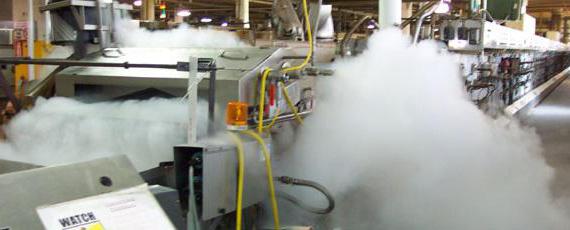
According to the method of operation (or starting) of the installation, they can be divided into manual, automatic and with various types of drives (electric, hydraulic, pneumatic, mechanical, combined).
Based on factors such as inertia, automatic fire extinguishing systems can be divided into ultra-fast, high-speed or low inertia, medium inertia and increased.
In addition to all of the above, fire extinguishing installations are classified according to the duration of supply. They can be pulsed, short-term, medium-duration and long-term.
However, both among specialists and ordinary consumers, the most well-known classification is based on the type of substance used to extinguish the flame. Based on this factor, automatic fire alarm and fire extinguishing installations can be divided into water, foam, gas aerosol, powder and steam.
Foam based installations
An automatic foam fire extinguishing installation is one of the most complex, because it additionally includes mechanisms that convert powder from a specific composition into foam (they are called sprinklers or steam generators). In addition, in foam installations (in particular, in a fire pipeline) the presence of special containers or reservoirs must be provided in which the concentrate for making foam or the already prepared composition will be stored.
The use of a ready-made composition and the preparation of foam directly in the process of extinguishing a fire are two incomparably different principles of operation of the fire control system. Each of these methods has its own positive and negative sides. If we draw the line between them purely conditionally, then we can say that an automatic fire extinguishing installation, in which the concentrate for preparing foam and the water supply are stored separately, will be more effective for protecting large-area objects.
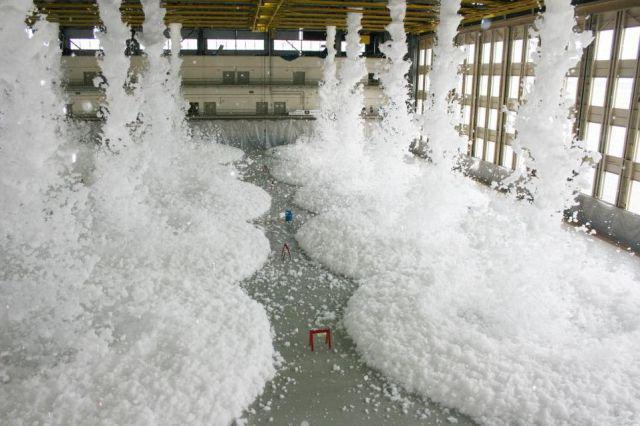
Installations with a composition ready for immediate use are more suitable for extinguishing flames in small areas, because there are a number of disadvantages that appear when storing sufficiently large volumes of foam mass. The most significant ones include the following. The finished composition has a short shelf life, i.e. it must be changed regularly, which entails an increase in monetary costs (and in proportion to the size of the tank). Further, if the required pressure can be provided by a fire water supply system, then there is no point in investing in the construction of a large reservoir. In addition, contact of the foam composition and concrete is unacceptable, which means that the inner surface of the storage container will have to be coated with epoxy mastics, which, again, increases the cost. And large tanks significantly complicate the process of recycling old foam and replacing it with new one.
An automatic foam fire extinguishing installation will prove most effective when used in chemical and petrochemical plants where a lot of flammable liquids are stored. Their use in warehouses and hangars with equipment is also justified, that is, where there are usually few people and there is no way to quickly evacuate material assets.
Water installations for fire fighting
Installations that use water in their work are the most versatile compared to all others, since they can be used where the safety of people and the possibility of their emergency evacuation is a priority goal over all others (offices, government agencies, etc.).
Installations that use water to extinguish fires can be divided into two types: local (sprinkler) and protecting the entire building as a whole (deluge).
The automatic fire sprinkler installation (from the English sprincle - “drizzle, splash”) is equipped with a fully autonomous response system. When a temperature increase is detected at any point on the protected surface, it (UAPT) independently activates and sends a stream of finely sprayed liquid as close as possible to the heat source.
If, when choosing a UAPT, preference is given to their water type, you need to pay attention to the type of control unit (“dry” or “wet”). The former are mainly used in unheated facilities and rooms, and the latter (“wet”) are used in places where the temperature is never below zero.
Deluge installations (automatic), unlike sprinkler systems, are never autonomous. They always work in tandem with the fire alarm system, which activates them. Deluge devices are not equipped with sensors that would determine the location of the source of increased heat generation and coordinate their work in this direction. During operation, these installations cover all accessible surfaces in the protected area with water.
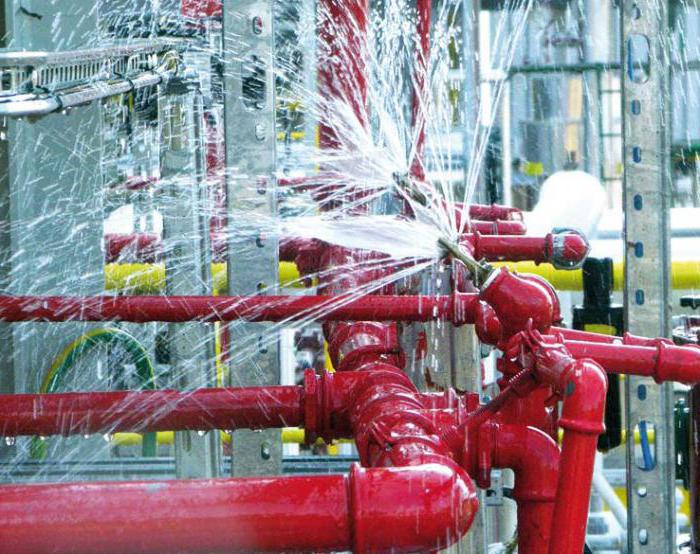
If preference is given to water versions of UAPT, it must be remembered that water can react with some organometallic compounds and compounds. The result of such reactions may be the release of toxic substances into the air, which will certainly create conditions that prevent the evacuation of people and may harm their health. For this reason, the use of automatic water-type fire extinguishing installations is, as a rule, unacceptable at those industrial facilities where the technological cycles involve coal, iron, metal carbides, etc. Also, the required effect will not be achieved in cases where water-based extinguishing systems are used to extinguish flames in rooms where they are stored with a combustion temperature of no higher than 90 degrees.
TRV installations
Currently, a new unique technology for the operation of a water fire extinguishing installation has been developed and successfully implemented. New generation automatic devices do not cover all accessible surfaces with a thin layer of water, but spray the liquid in small droplets directly into the flame. The liquid evaporates, thereby binding the fire. Such means are called water mist fire extinguishing installations (MAW). In addition to binding the open flame, evaporation of the liquid leads to increased vaporization. Steam, in turn, reduces the volume of free oxygen contained in a closed space and thereby suppresses the possibility of combustion processes. The result of the impact of such installations is maximum localization of the source of fire, its separation and complete extinction of the flame.
Automatic fire extinguishing systems using fine spray technology work effectively in places where flammable compounds and liquids are stored. Also, such AUPTs are capable of stopping the combustion process provoked by sudden changes in voltage in the electrical network. In such cases, you most often have to fight fire when extinguishing live electrical equipment. Provided that the water sprayer and the burning object are located at a distance of at least 1 m, the permissible voltage values can reach up to 36,000 V.
In addition, a cloud of tiny droplets of water is an excellent absorbent that binds carbon monoxide vapor, ash and other particles that can cause serious harm to the human respiratory system. The process of extinguishing a fire by installing a expansion valve does not interfere with the evacuation of people (if necessary) and the protection of material assets.
One of the disadvantages of such devices is the inability to use them in places where there is a risk of contact with organometallic compounds.
Gas-type installations
Modern liquefied refrigerants or compressed nitrogen, argon, inergen enable a person to defeat fire in places where liquid means cannot be used for these purposes (rooms where information storage facilities, libraries, museums, aircraft may arise).
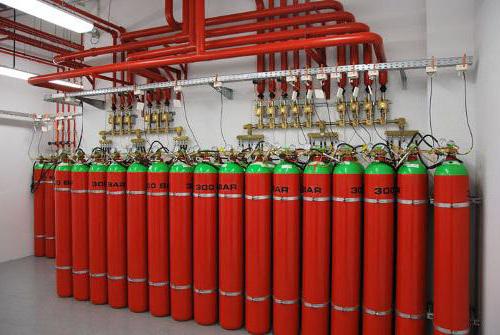
In rooms protected by gas fire alarms, when an alarm occurs, devices and mechanisms for light (inscriptions “Gas - leave!” and “Gas - do not enter!”) and sound notification of a fire must be turned on. These are the requirements of the GOST system.
Gas fire extinguishing installations (automatic) create an environment where the development of fire is impossible in principle. This is very convenient for rooms with a high risk of flame spread. If the fire area is small and the introduction of significant volumes of gas is not required, such fire extinguishing is possible even without prior evacuation of people. However, you need to know that gas in large doses can cause serious damage to human health.
The use of gas installations for extinguishing fires is justified in cases of fire in power supply premises, at thermal power plants and state district power plants (extinguishing generators in the case of using hydrogen-type cooling), at facilities for the production of flammable materials, in long-distance transport, in warehouses with valuables. Such installations can be used in libraries and museums, provided that exhibits and rarities are stored under glass.
It must be remembered that the installation of an automatic fire extinguishing system based on gas will not be effective where materials can burn without the participation of oxygen in this process. Such devices are not used in cases where materials are prone to spontaneous combustion and smoldering (wood shavings, rubber, cotton, etc.), for certain types of metals that can react with gases, for pyrophoric materials.
Powder based fire extinguishing systems
Currently, most often (about 80% of cases) all previously described types of automatic fire extinguishing systems are inferior to powder-type fire extinguishing systems. This breadth of application is due to a number of advantages. Firstly, these devices are quite versatile (they can even be used for extinguishing electrical installations). Secondly, the reagent has a fairly long shelf life and its disposal is not very difficult. In addition, these UAPTs have a high temperature limit and are non-toxic.
Powder-type installations are capable of fighting class A, B and C fires, which significantly expands their capabilities when eliminating fires at remote sites, where sometimes you have to wait a long time for help.
An automatic fire extinguishing installation using powders is effective in case of fires at oil loading and pumping facilities, and when working with electrical points and units. However, the desired result will not be achieved if materials are burned that do not need oxygen to maintain this process, as well as those that are prone to spontaneous combustion and smoldering.
The devices are not compatible with smoke ventilation systems. And since the latter must be present where people are constantly present, industrial facilities, warehouses and tunnels fall on the share of powder UAPTs.
Aerosol type devices
An automatic aerosol fire extinguishing installation is a fairly highly specialized device. They cannot be used when extinguishing fires of potentially explosive substances, or where people are constantly present. The composition of the aerosol itself is, in principle, harmless and is not capable of causing any serious harm to health. However, while operating autonomously, automatic fire alarm and aerosol fire extinguishing installations do not allow people to see where escape routes are.
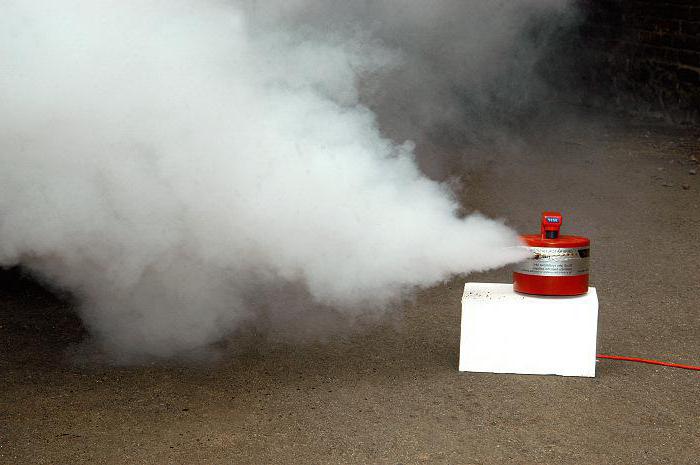
Due to the high efficiency of these fire alarms, people can wait out the fire in the building until it is completely extinguished. But here it is important to monitor and take the necessary measures in order to prevent the installations themselves from exploding due to the large amplitude of fluctuations in internal pressure relative to external temperatures.
Aerosol-type devices have proven themselves to be excellent in cases where it was necessary to extinguish fires caused by problems in the electrical network. Such installations are also effective in fighting man-made fires. It is ideal for providing fire protection for large vehicles, oil plants, etc.
However, such an automatic fire extinguishing and alarm system using aerosols is not capable of completely eliminating smoldering in the internal layers (porous, fibrous materials) and combustion without the presence of oxygen.
Autonomous triggering and impact settings
Above in the text, in most cases, automatic stationary fire extinguishing installations were described, but along with them there is the concept of an autonomous system for fighting fire. What it is?
The autonomous installation is capable of independently detecting a source of increased heat transfer and making a decision on the need to activate the fire extinguishing process. Such devices fully include UAPT of water and gas types. Such systems are usually equipped with special sensors that are sensitive to temperature increases or identify the corresponding particles in the air. If such factors are detected, the sensors transmit a signal to their own panel for analysis and commands in order to activate the work process (in the case of a clear threat of fire). For different types of installations, the sequence of actions may differ slightly, but in most cases the algorithm is constant: “identification - request - activation”.
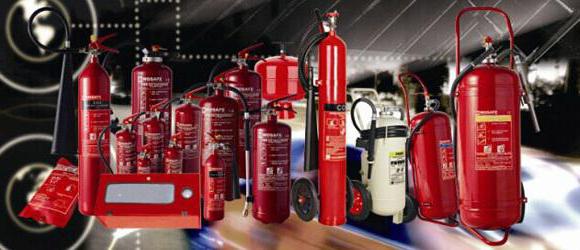
So, the mandatory components included in autonomous automatic fire extinguishing installations are detection and launch devices and, in fact, devices for direct fire extinguishing. The first, of course, can be called the most important component of an autonomous installation. Detection and triggering devices include fire detectors equipped with a battery or generating EMF using an induction coil. These devices also include a fire cord, a heat lock and an initiating powder.
In addition, often autonomous installations have the ability to manually start the system, which allows you to activate the work process without waiting for the temperature in the protected area to exceed critical values. This function is very, very useful, since a person can often feel and respond to signs of a developing fire (increase in temperature, smell, smoke, etc.) much earlier than a mechanical sensor system does.
Price range
When installing automatic stationary fire extinguishing installations to protect your own households, it is important to maintain a balance, not trying to save where this is unacceptable, but also not investing unnecessary funds, since fire is a rare occurrence, and maintaining a fire extinguishing installation is financially comparable to its original cost.
Today, powder and aerosol type UAPTs are considered the cheapest, since they cause irreparable damage to material assets and are mostly dangerous to plants and animals. Gas installations are a little more expensive: there is no harm to property, but the sealing of the premises and preliminary evacuation of people are required. Foam installations are even more expensive, but are generally not applicable in private housing construction and are ideal for warehouses and hangars with equipment.
The most expensive are fine-jet water spray systems, which in no way impede the evacuation of people, allow you to wait out a fire indoors until it is completely extinguished and do not cause any harm to material assets. The liquid droplets are so small that when they come into contact with a flame, they evaporate without reaching the surfaces. Also, during the fire extinguishing process, steam is generated, which prevents the spread of fire and lowers the temperature in the room.
